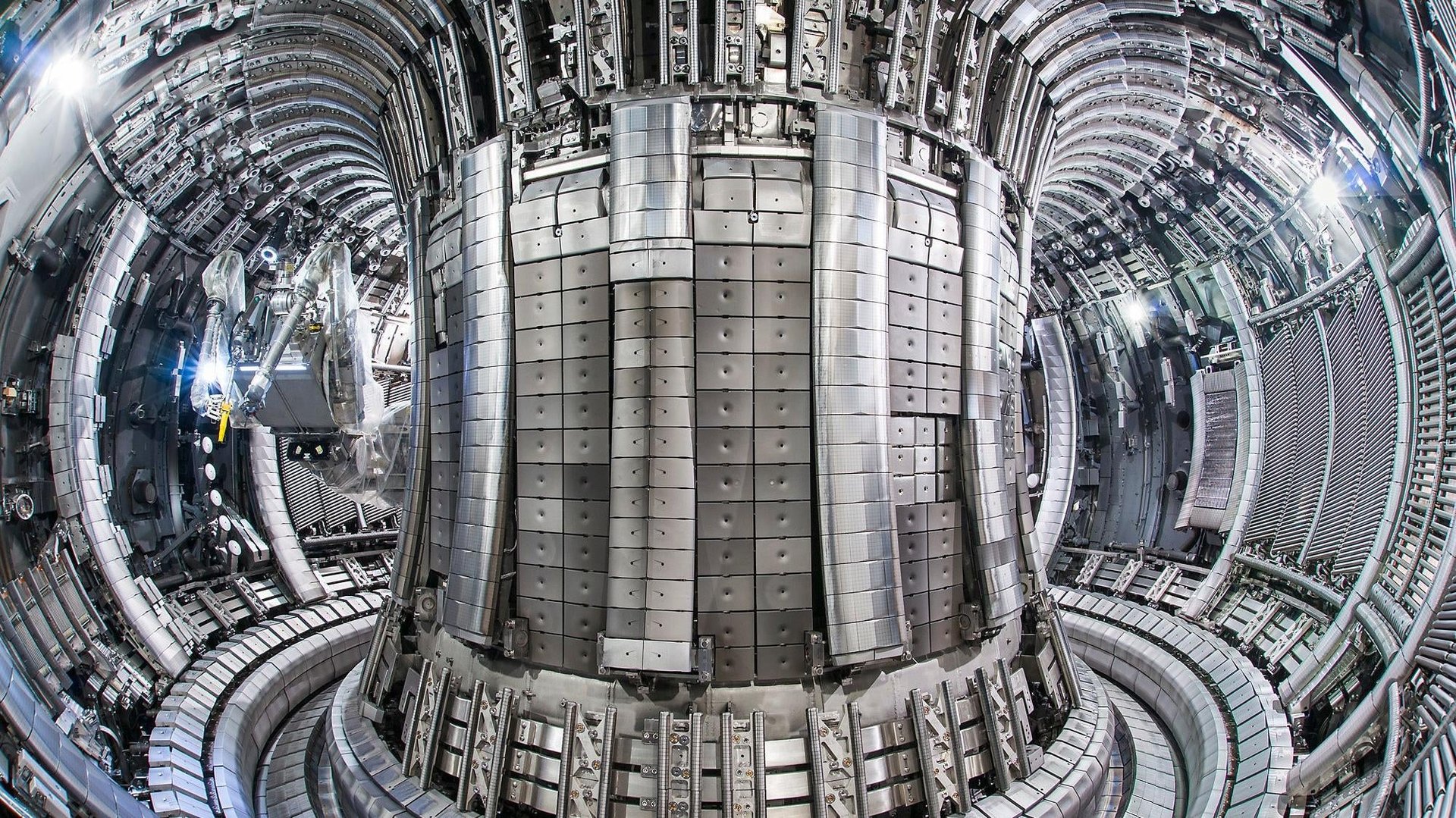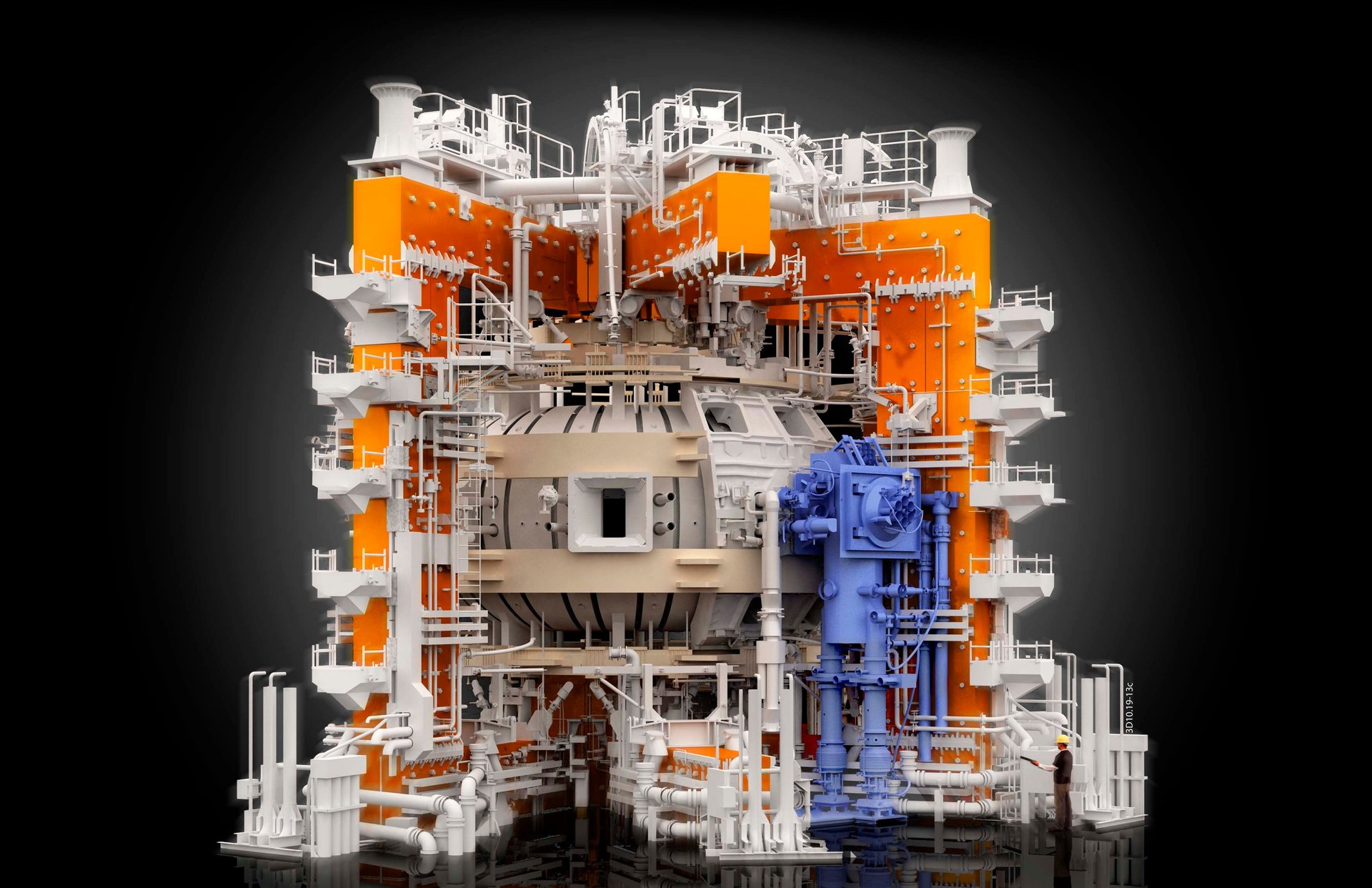Clean energy could be 'closer than ever' after a nuclear fusion machine smashed a record
JET's final nuclear fusion experiment produced a record-breaking 69 megajoules of heat. Nice.

A UK-based nuclear fusion collaboration just produced a record amount of energy, a refreshing dose of good news in humankind’s quest for cleaner energy sources. The Joint European Torus facility, or JET, produced just over 69 megajoules of heat.
Suggested Reading
A brief distillation of nuclear fusion: It is a reaction by which atomic nuclei fuse, turning into a new element while at the same time producing a huge amount of energy. It is a cleaner process than nuclear fission, its evil twin, which generates energy (and a sizable amount of waste) by splitting atoms. Nuclear fusion is the same reaction that powers stars like our Sun, and for decades scientists have tried to make the reaction energy efficient on Earth.
Related Content
If such a goal were realized, the fusion reactions would generate more energy than they take to catalyze, thereby producing—at least in theory—unlimited clean energy. This does not take into account the commercial viability of fusion, and to-date most of the progress towards fusion energy as a power source has been done at great expense by places like the DOE and, in JET’s case, the UK Atomic Energy Authority (UKAEA).
Commercially viable nuclear fusion is always 20 years, or 30 years, or half a century away, or so aspirational minds tell us. It sometimes seems like a fata morgana, hovering on the horizon, just out of reach. But hopefully that’s where the mirage analogy ends; after all, accomplishments like that recently made by JET are small-but-significant steps towards the hope of a clean energy future.
The 69.26 megajoules recently released at JET exceeds the facility’s previous record of 59 megajoules, as noted by the DOE, and more than triples the facility’s initial peak fusion power record of 22 megajoules, set in 1997. Looks like the DOE will need to update its website.

The recent pulse at JET also generated 20 times the record energy produced by the United States Department of Energy’s National Ignition Facility last year, albeit through a different process. Tokamaks and stellarators generate magnetic fields to confine a plasma to catalyze fusion. The NIF blasted high-powered lasers at a peppercorn-sized pellet, inducing fusion in the target. Laser-powered fusion happens quickly, and at high pressures and densities, while magnetic fusion occurs at low pressures and densities over an extended period of time.
JET began operations in 1983 and stopped its experimental operations in December 2023, so the recent result is a triumphant final act for the veteran tokamak. Over its 40 years of operations, the facility set multiple records, clearly saving the best for last.
“JET’s final fusion experiment is a fitting swansong after all the ground-breaking work that has gone into the project,” Andrew Bowie, the UK Minister for Nuclear and Networks, told the BBC. “We are closer to fusion energy than ever before thanks to the international team of scientists and engineers in Oxfordshire.”
It’s a beautiful thing to imagine a world where we don’t need to fume over Taylor Swift’s frequent flights, or those of any other billionaire. And it would be a particularly beautiful irony if the spunky project named JET helped get us there.